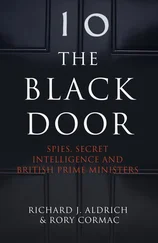GCHQ’s most important outpost in Asia was Hong Kong. China was the venue of one of Britain’s early Cold War code-breaking triumphs. Between March 1943 and July 1947 GCHQ was able to read the high-grade Russian cypher traffic passing between Moscow and its mission at the headquarters of Mao Tse-tung’s People’s Liberation Army in Yunnan. This was a highly secret programme, and GCHQ only began passing material to the Americans in March 1946. The decision not to share until this point may have reflected anxieties about the strong differences within the American administration about China policy, but it is noticeable that the spring of 1946 also marks the advent of the revised BRUSA agreement. 7 Exactly how this breakthrough was achieved when many other Russian high-grade cypher systems remained immune to attack is still a mystery. However, SIS had placed a rather eccentric officer called Michael Lindsay at Mao’s headquarters in Yunnan, where he was assisting the Chinese Communist communications team as their ‘principal radio adviser’. This may eventually prove to be part of the story. 8
The British colony of Hong Kong was of special value to the United States. This reflected the fact that, after the end of the Chinese Civil War that brought Mao Tse-tung to power in 1949, the United States did not even have an embassy in mainland China. ‘Hong Kong became an American watchtower on China,’ recalls Jack Smith, who looked after the Far East in the CIA’s Office of National Estimates. 9 GCHQ joined with the Americans and the equivalent Australian organisation, Defence Signals Branch, to develop the facilities in Hong Kong. Washington received the full intercept output of Hong Kong, but with the onset of the Korean War demands for intelligence went up sharply, and Washington considered that combined US–UK intercept facilities in the Far East were ‘far short of requirements’. 10
In July 1952 the US Communications Intelligence Board persuaded its British opposite numbers of the ‘urgent need’ to send an additional eight-hundred-strong US Air Force sigint unit to Hong Kong to join the hard-pressed British and Australians. However, this was vetoed by the Governor of Hong Kong, Sir Alexander Grantham, who detested the way in which his territory had become host to a myriad of espionage activities. 11 Once the Chinese had intervened in the Korean War, an attack on Hong Kong by China was always a possibility. Therefore GCHQ negotiated emergency facilities at Okinawa in Japan for the British and Australian sigint personnel working there. 12
Even in 1955, the United States was still negotiating for new sites in Asia. Sigint sites were not small or discreet, often requiring vast acres of wireless masts known as ‘aerial farms’ to capture signals of interest. In Taiwan, American officials had run into trouble securing a 335-acre site near Nan-Szu-Pu airfield where they had plans to locate hundreds of personnel from the Army Security Agency. 13 With repeated clashes between the United States and Communist China over the Taiwan Straits in the late 1950s, the British government reviewed the future of Hong Kong, which seemed exposed, and pondered the short-term value of the continued British presence in the colony. Much turned on the mysteries of the UKUSA alliance, the Anglo–American–Commonwealth sigint pact of cooperation, since Hong Kong hosted British, Australian and American eavesdroppers. 14 Alongside the GCHQ activities there were also vast British and American programmes in Hong Kong for running agents and interviewing defectors from mainland China. During the 1950s and 1960s, both the State Department and the Pentagon considered Hong Kong to be the single most important British overseas territory from the point of view of intelligence-gathering. 15
In order to stimulate more defectors from China to Hong Kong, Britain launched ‘Operation Debenture’ in 1954. This was a covert radio project and constituted ‘the first UK operations of any magnitude for the penetration of Mainland China’. The aim was to provide an undercover broadcasting station that would increase the desire for contacts with the West amongst the Chinese middle classes, and increase defections across the border into Hong Kong. The emphasis was on the ‘purely “intelligence” angle’, and the defectors were needed because SIS human agent coverage of China was weak. The original intention had been to place this ‘black station’ in Hong Kong, but it was eventually located in Singapore, hidden at one of the military bases. 16
The main GCHQ sigint stations in Hong Kong were on the coast at Little Sai Wan and the curiously-named outpost known as ‘Batty’s Belvedere’. The contribution of Australia’s Defence Signals Branch was important, since Australia had identified China as its top sigint target, followed by Indonesia and then Vietnam. 17 During the late 1950s the commander of the sigint station was an Australian called Ken Sly, and originally it was staffed by airmen from the RAF’s 367 Signals Unit. 18 A constant flow of National Servicemen had learnt Chinese at RAF Wythall near Birmingham and later at RAF North Luffenham in Leicestershire, but by 1957 the increasing use of civilians with qualifications in the language was reducing this considerable training requirement. There was also a separate cohort of Vietnamese linguists. 19 Civilianisation brought unexpected security problems, since civilians could not be used for some of the menial duties carried out by service personnel. GCHQ tried to address this problem by employing deaf and dumb locals in the more sensitive locations on the sites. 20
Ken Sly was well aware of the attentions of Chinese intelligence. One of the locally employed Chinese, Wal Bin Chang, showed a propensity for taking photographs of groups on social occasions, and ‘also took care to photograph each one of us separately’. Moreover, he tended to volunteer for extra duties at unsociable hours. He was eventually captured on the border trying to cross over into Communist China with a number of documents, including a description of the personal habits of every NCO and officer at the base. He had been entertaining some of them in ‘girlie bars’, and admitted that he had persuaded one of the officers to sleep with his wife, adding: ‘In this way I will be able to obtain much more information of value to our side.’ The officer in question was swiftly discharged. Military staff at overseas listening stations working for GCHQ were a continual target for this sort of honey-trap. 21 Ken Sly was eventually replaced by a civilian with the rank of Senior Linguist Officer, and moved on to serve in Australia and then with GCHQ at Cheltenham. 22
In both Hong Kong and Cyprus, the British were experimenting with intelligence-gathering radar. At Hong Kong the main site was located three thousand feet up the precipitous cliffs of Tai Mo Shan in the New Territories. Operated jointly by the RAF’s 117 Signals Unit and the Australians, it peered out into Chinese airspace, and its main purpose was ‘to provide intelligence information for the UK, USA and Australia’. 23 Western aircraft regularly intruded over the border to generate an elint response from Chinese defences. 24 The site was constructed with great difficulty in 1957 and was operated continuously into the 1980s. By a heroic effort, cranes and lorries had moved materials up to the summit by means of what was little more than a jeep track. During construction a ten-ton crane had been lost over the edge, but fortunately the RAF driver leapt clear before the vehicle disappeared over the cliff. Later, the RAF Regiment, known as the ‘Rock Apes’, who guarded the base, lost two Land Rovers over the cliff. This prompted a local humorist to erect a sign at the base of the uphill trail that warned: ‘Beware of Falling Rocks’. 25
GCHQ does not seem to have broken much high-grade Chinese traffic; nevertheless, there were intelligence success stories. One of the most important was the prediction of the detonation of China’s first nuclear weapon in 1964. Like all such programmes, China’s efforts to acquire a nuclear weapon required a vast technical and industrial effort, therefore imagery from overflights together with relatively low-level signals gave a good indication of progress. Archie Potts, the UK’s Deputy Director of Atomic Energy Intelligence, noted that for about five years the British had been aware of an important secret programme controlled by ‘a special ministry’. Plant construction had begun in 1958, with an elaborate effort to produce uranium ore. The Chinese had also ceased their public complaints about superpowers with nuclear weapons. All this prefaced China’s first nuclear test. 26
Читать дальше












